James Ogden Stiles, Jr. died at his home in Coldwater, Kansas, on March 11, 2024. Jim was born on December 11, 1949 to Sue Montfort Stiles and James Ogden Stiles, Sr. of Louisville, Kentucky. He was raised in Louisville, graduated from…
FLYING OVER MOAB’S PAST (“If I Could Fly Away.”) photos by Jim Stiles (ZX#104)
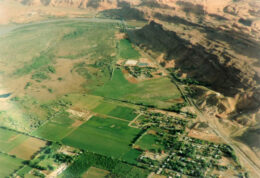
This issue features Moab and Arches and a ways upstream and down the Colorado River. Almost all of them are from the early 1990s thanks to Paul, but a few of the Arches images date back to the late 1970s and early 1980s via those Arches pot patrols.
These photographs are especially notable, because they show just how much the town and the river have changed over the last few decades. So strap yourself in and take a flight…Swanstrom is a damn good pilot…
From 2007: “Brave New West”(The Amenities Boom & Meltdown) w/ 2024 Updates —Jim Stiles (ZX#103)
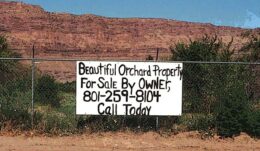
I had been ranting for years about the impacts an Industrial Tourism economy could create. My pleas fell on deaf ears, especially with the mainstream environmental community. Organizations like the Southern Utah Wilderness Alliance (SUWA) embraced the change and even devoted an entire issue of its newsletter praising the amenities economy as a clean, non-polluting way to bring economic prosperity to areas that had previously depended on the extractive industries to survive. What they failed to consider was that while coal mining and oil and gas exploration and ranching could scrape bare the skin of the rural West, a massive monolithic tourism economy would eventually bare and destroy its very soul.
The Legacy of Nasja Begay: Paiute Guide — By Harvey Leake (ZX#102 )
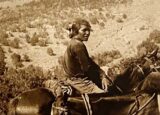
From early times, a tiny community of Paiute Indians made their homes at the bottom of a remote canyon that transects the Arizona/Utah border. Early in 1909, two of them—a father and son—rode eastward on a rocky, fifty-mile-long trail toward Monument Valley in order to patronize a trading post at a place known as Oljato. The father’s name was Mupuutz, which means “Owl” in the Paiute language, although he was better known by the Navajo translation of his name, Nasja (Nd’dshjaa’), or the name the census takers used for him, Ruben Owl. His son was called Nasja Begay (Nd’dshjaa’ Biye’), i.e., Owl’s Son. Nasja was in his early seventies, and Nasja Begay was about eighteen.
The pioneer trading post at Oljato had been established a few years earlier by John and Louisa Wetherill, my great-grandparents, and Clyde Colville, their trading partner. They were quite fluent with the Navajo language and were learning some Paiute as well.
BEFORE TELLURIDE & ASPEN WENT CRAZY: 1950-1980/Photos by Herb Ringer (ZX# 101)

From Edward Abbey’s “The Journey Home”
“The town of Telluride was actually discovered back in 1957, by me, during a picnic expedition into the San Miguel Mountains of southwestern Colorado. I recognized it at once as something much too good for the general public. For thirteen years I kept the place a secret from all but my closest picnicking cronies. No use: I should have invested everything I had in Telluride real estate. In 1970 a foreigner from California named Joseph T. Zoline moved in with $5 million and began the Californica-tion of Telluride. Formerly an honest, decayed little mining town of about good souls, it is now a bustling whore of a ski resort with a population of 1,500 and many more to come. If all goes badly, as planned…
… Men weep, men pray and kneel, but money talks. Money walks and talks and gets things done.
— EA
BITING BUGS & POISON IVY: “Why God?” — Jim Stiles (ZX#100)
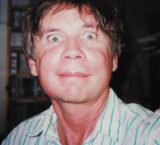
I was a newly initiated Boy Scout, officially a Tenderfoot, and had traveled with Troop 246 to a summer Boy Scout camp at Rough River, Kentucky. We had planned a canoe trip for the next day, but early that afternoon, we set up camp in an open field. As I sat in the tall grass chatting with my pals, I suddenly felt an uncomfortable itch emanating from the most sensitive part of the male anatomy. I said nothing at first, and was not about to share my problem with my buddies. Besides, I was a Boy Scout. It was still okay to be stoic, to admire stoicism, and endure discomfort bravely, and quietly, like Gary Cooper or Jimmy Stewart might do. I said nothing…
Arches’ Vintage Wooden Signs (Gone but Not Forgotten) — Jim Stiles (ZX#99)

For decades, the iconic routed wooden signs, in national parks across America, were a familiar sight to tourists. They were works of art…
But leave it to the government to find one. Someone in the Department of Transportation, his/her identity lost to history, decided to take a look at the park signs and saw red flags everywhere…
“These signs! These signs are NOT in compliance with federal highway safety standards!!!”
The Irony of Glen Canyon Dam’s Eventual Demise —Jim Stiles (ZX#98)
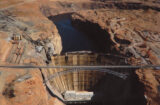
If you didn’t live through the 1950s, there’s a commonly held but false impression that ‘nothing happened’ during the decade… But the decade of the ‘50s initiated the groundwork, literally, for what was to come. After a decade of the Great Depression and four years of world war. Growth was inevitable, but the explosive growth was stunning…
In order for the arid Southwest to grow far beyond anything that could be called “sustainable,” proponents needed two rare commodities for the arid deserts — water and power. Projects like Glen Canyon Dam and the Powell Reservoir were planned and built with that goal in mind.
Damn sustainability…full speed AHEAD.
1906 —THE WETHERILL & COLVILLE TRADING POST: Establishing a Home on the Desert …by Harvey Leake (ZX#97)

The wisdom of such a move was not evident to the folks back in Mancos. The costs of desert life were loneliness, hardships, and isolation from the security of civilization. Provisions were limited to those that could be hauled in over rough wagon roads from distant supply points, and the many niceties of society were no longer close at hand. Nevertheless, the Wetherills came to relish the change. John was no stranger to the desert, and he had developed a profound appreciation for it. Louisa was getting to know her Navajo neighbors, and the two children—Ben, who was nearly four and Sister, a year younger—were hardy and adaptable.
For Louisa, the experience became transformative.
1950: BEFORE ‘CANYONLANDS’ WAS A PARK…The Other ‘Place No One Knew” by Tug Wilson (ZX#96)
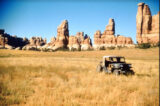
Alan “Tug” Wilson isn’t exactly a household name to most Zephyr readers. But it should be. While he may not be instantly recognizable, many lovers of Canyonlands and Arches National Parks will recognize his father. Tug was blessed to be the only son of Bates Wilson. In 1949, Bates became the first official superintendent of “The Arches,” when it was still a national monument. Just a year after his arrival, Bates was introduced to the vast untouched landscape to the west of Moab— and north and south of the little town as well. The canyon Country of southeast Utah was still an almost untouched landscape, known only to the ranchers and cowboys of Scorup/Sommerville Ranch, and a handful of intrepid explorers. The land lay empty for centuries…
A CHILD FROM ANOTHER WORLD … On CEDAR MESA — Tom McCourt (ZX#95)
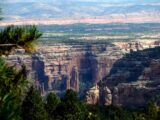
I have a granddaughter about the same age as this little one, and that makes this child very close, and very dear to me. I can’t explain it, but I’m carried away with deep emotion.
I realize that for a thousand years this little one has slept in the shadow of this rock shelter, and now, quite by accident, I’m holding her little face in my hands. It makes me wonder, what twist of fate has brought us together here this morning. How did this happen, and why? I have a hundred questions. Who was this child? What was her name? How did she die? Why was she buried here?
THE KIDS on GLEN MEADE ROAD (1954) & THE MARCH of ‘PROGRESS’ —Jim Stiles (ZX#94)
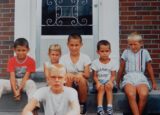
Our little piece of The American Dream was one of the first subdivisions to take root in east Louisville, Kentucky, more than 60 years ago. Glen Meade Road was a solitary finger of small two-bedroom brick homes in an area that had been farm land for almost two centuries. We were surrounded by dense woods and wheat fields, bottomless swamps and a pumpkin patch.
During the summer of 1954, we made weekly trips to Glen Meade to see how our home was progressing. The road itself was a mud hole that was last on the list of “things to do.”
If I recall, we paid about $12,000 for our little two bedroom home.
AN ‘ANCIENT’ MOAB ALBUM: 1989? (Faces & Places #1) —Jim Stiles (ZX#93)
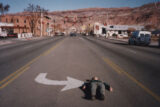
One morning in December 1989, I went downtown to check out the Christmas decorations. After a fairly chaotic tourist season, which had started last March and wound down in mid-October. now Main Street was dead. Many businesses had put up signs that read “Closed For The Winter.” There wasn’t enough tourist traffic during the winter months to sustain the number of new businesses that had opened in the last couple of years.
I saw fellow Moab resident Lucy Wallingford appreciating the relative quiet and especially how empty Main Street was. To emphasize the point, I asked Lucy if she would lie down in the middle of the turning lane. Lucy quickly assumed a location at the pointy end of the arrow. (I should note that this was a staged photograph. Lucy was not lying there before I arrived.)
This is perfect, I thought. “The Way Life Should Be.”
HERB RINGER— 25 Years After He Left Us: December 11, 1998 —Jim Stiles (ZX#92)
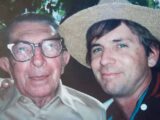
On December 11, 1998, twenty-five years ago today, my friend Herb Ringer passed away in Fallon, Nevada. He was 85 years old. His health had been failing for a few years. In 1994, Herb was forced to give up driving — the greatest joy of his life — when he was diagnosed with a rapidly deteriorating case of macular degeneration. I had met up with him that summer at a high mountain lake above Crested Butte, Colorado. Earlier that week, an optometrist in Salida had diagnosed his condition and warned Herb that he needed to head home to Fallon immediately. Herb took the news stoically, maybe better than I did, and he left for Fallon the next day.
…this story is personal; it’s more about our friendship than his special artistic talents, though both are forever intertwined. I’d like to tell you more about Herb Ringer, the good-hearted, decent man and loyal friend that he became to me. We were connected in a way that I have rarely experienced. Herb once said, “You’re the son I never had.” The feeling was mutual.
OVERLAND to FORT MOKI in GLEN CANYON —With a Sad Update by Tom McCourt (ZX#91)
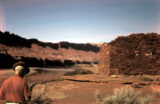
By the end of 2004 the water level in Lake Powell had dropped more than a hundred feet. Seven years of drought had greatly reduced water flow into the lake. At the same time, an ever-increasing demand for irrigation and municipal water was sucking the lake dry. Utah, Arizona, California and Nevada all had straws in the water. Competition over who could get the most was intense.
But, for some of us, the fading fortunes of the lake were not all dark and gloomy. The dramatic drop in water level presented a possibility that intrigued some of us. If the water was that low, what had happened to the old Indian fort at the mouth of White Canyon? Was it possible that Old Fort Moki would be coming out of the water again?
EXPLORING the NEEDLES in 1949: With Filmmakers Ray & Jinny Garner (ZX#90)

NOTE: You’ll notice that the quality of these images is not the best, but their historical value is priceless. The original 16mm film was badly degraded by the time anyone thought to digitize it. Still, despite the grainy, slightly blurred images, and those vertical scratches, I could look at these pictures all day. When you reach the end of the still images, note that there is a link to the film itself. There’s no sound, so do your own narration. But these images are worth thousands of words, coming as they do, from another time…Enjoy the ride
DALLAS, TEXAS: 11.22.1963…And the Dwindling Few Who Still Remember —Jim Stiles (ZX#89)
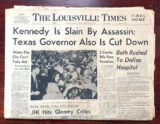
The National Geographic story was called “The Last Full Measure,” and was written by its president and editor, Melvin Bell Grosvenor. He began…
“His life was such — the radiance he shed —that if we live to be a hundred, we will remember how he graced this earth, and how he left it. Only the future can assign to John Fitzgerald Kennedy his true place in history, But this I know. When men now boys are old, in distant time beyond the year 2000, they will say, ‘I remember I remember when they brought him home, the murdered President, from Dallas…’
“Again and again the story will be told —just as I recall my Grandfather Grosvenor, at 92 telling me graphically of how, as a young student at Amherst College in Massachusetts , he traveled by horse and train to the bier of the martyred Lincoln.”
I still have that copy of the National Geographic. I keep it on a shelf of books and artifacts — touchstones from my life. Meaningful to me, but few others.
CRESCENT JCT. MEMORIES: A Tribute to Dad…by Colleen Wimmer (ZX#88)

Where the old highway meets the interstate, at the narrowest point between the roads and the railroad, sits a meager cafe, an Amoco station, and a little community—two houses, three trailers and a horse corral, to be exact.
Before the highway was built, long before the freeway was even invented, this little community was just a switching station. And when Dad came with his father and family in June of ’47 to build a business there, it was called Brendell. Old timers still call it Brendell, but Grandad named it Crescent, for the bend the railroad tracks take along the flatland. It doesn’t resemble much of a switching station anymore. An extra row of tracks and old loading ramps are all that remain. Now it’s a truckstop whose backyard is cluttered with old cars—relics from the fifties and sixties, piles of ties, empty bomb boxes from World War II, and an assortment of someday useful junk that has found its home there.
MAY 1972: A CANYON COUNTRY ‘MOMENT IN TIME’ via the U.S. National Archives (ZX#87)
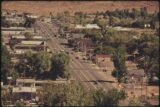
According to the NARA site, “In 1972 David Hiser was one of several photographers chosen by the Environmental Protection Agency (EPA) to document locations in the United States as part of the DOCUMERICA Project. Over 460 of Hiser’s photos can now be found in the National Archives Catalog.” Hiser moved to Aspen, Colorado when he was 25 years old, and would enjoy a successful career as a photographer, including 66 contributions to National Geographic.
Here is a selection from those images that feature Moab, Utah and the Canyon Country of southeast Utah. I arrived in Moab just months after Hiser completed his photo work and have added my own commentary to his photos…JS
‘SELLING’ WILDERNESS LIKE A USED BUICK— 1998: When Everything Changed — Jim Stiles (ZX#86)

I had stumbled upon a website called “The Wilderness Mentoring Conference of 1998.” The gathering had been assembled by a group of self-named “mentors,” professional environmentalists active at the time in organizations that reached from Washington DC to Alaska. This relative handful of New Environmentalists were frustrated by the movement’s lack of progress in pushing and passing wilderness legislation across the country.
A prominently displayed quote by Michael Carroll, later of The Wilderness Society, established the tone and direction of all that would come later:
“Car companies and makers of sports drinks use wilderness to sell their products. We have to market wilderness as a product people want to have.”
OZ: Where Cowboys Wear Shorts, Sip Tea, and Yell “OI!!!” —Jim Stiles (ZX#85)
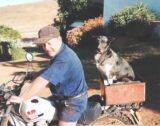
The toughest, most decent ‘cowboy’ I ever met hasn’t been ‘lanky’ since he was eighteen. He barely reaches 5 foot six inches, and could not, in anyone’s wildest dreams, be regarded as laconic. In fact, it was because of his gift for gab that 25 years later, hestill comes closer than anyone to being like a brother to me. Though he is 10,000 miles away, in the southwest corner of Australia, we are kindred spirits. In fact, he just called this morning and we had, according to Aussie custom, another great “chin wag.” Nobody wags better. (And he doesn’t say, ‘Giddy up.” he shouts “Oi!!!”)
His name is John Wringe and we met at a roadhouse 200 miles north of Perth, while both of us were traveling south, by bus — me to catch a train, the Indian Pacific, back to Sydney and the long flight home. John had been visiting his son-in-law and was now returning to his home, 150 miles south of Western Australia’s (WA) capital…
